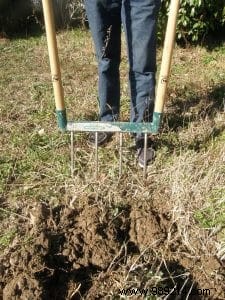Choose your tool garden is not trivial. Gardening is producing; vegetables, flowers, fruits… It is also making joy; the joy of sharing, of discovery. The garden is a source of benefits that we are not necessarily aware of.
Eating healthy vegetables is almost a plus. Breathe, exert yourself, observe, listen, respect, discover, create links, relearn patience , the cycle of the seasons. Marvel at a color, a shape, the strength of the germ that lifts the earth, the ingenuity of the ant that drags the seed between the clods, the faded flower that is still working to project its seed.
To benefit of these pleasures, the gardener contributes with a few simple works, helped by well-adapted tools. Because it is not enough to know the techniques and methods of cultivation, you still have to implement them respecting both the tool and the plant .
For each of them, there is a way to proceed, an adequate use. So any mechanical action in the garden begins with the choice of tool. A hoe is used to hoe, a rake to rake...
There are two kinds of hand tools, forged and welded , the former being stronger. If the soil in your garden is loose, you can buy welded hoes, hand pruners, spades and fork-spades. Rakes too, whatever the nature of the ground. On the other hand, the hoes, pickaxes, saps, tines, in forged formula are to be preferred, especially in heavy or stony ground, because much more solid.
The handle of garden tools is also important. Made of wood or composite. The composite material is two to three times more expensive compared to a wooden handle but almost unbreakable, very practical for pickaxes and spades.
This does not exclude the maintenance of the tool, metal part and handle . Sharpening, rustproofing and wood protection are on the program of gardening activities.
You can of course find your garden tools in your favorite garden centers and DIY stores. If you want a choice, also search on the net, such as on MonMagasinGeneral.com.

use of biogrif